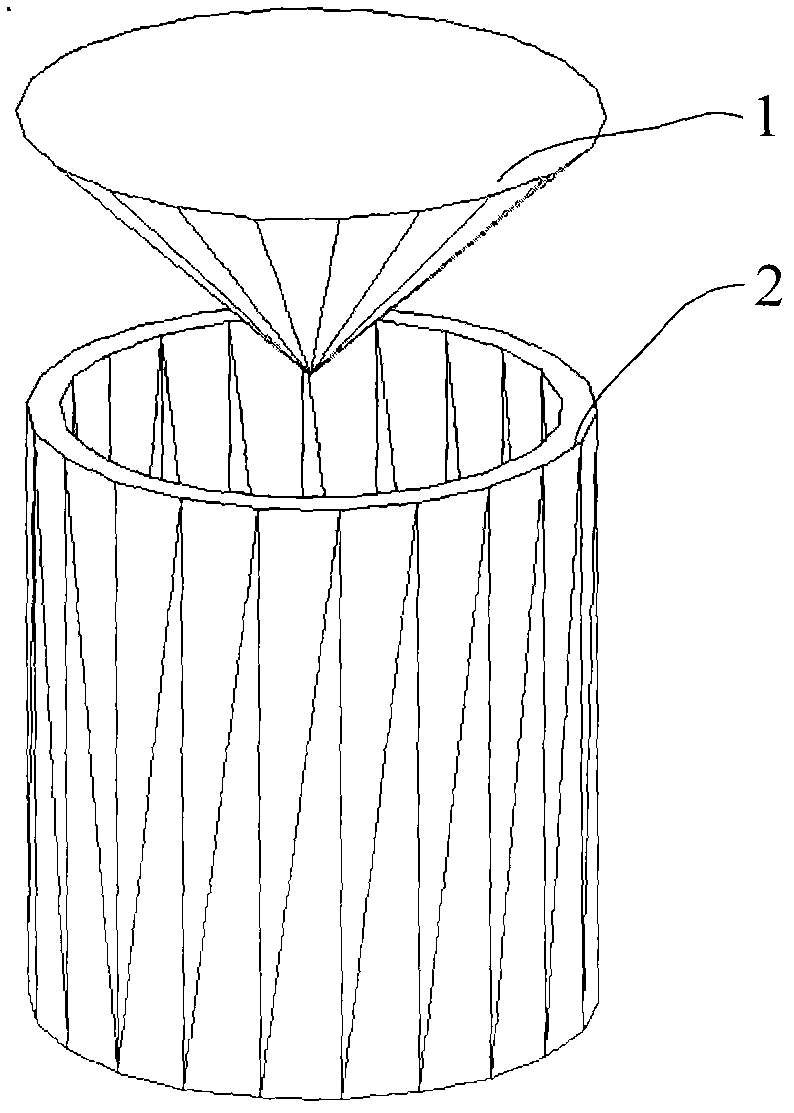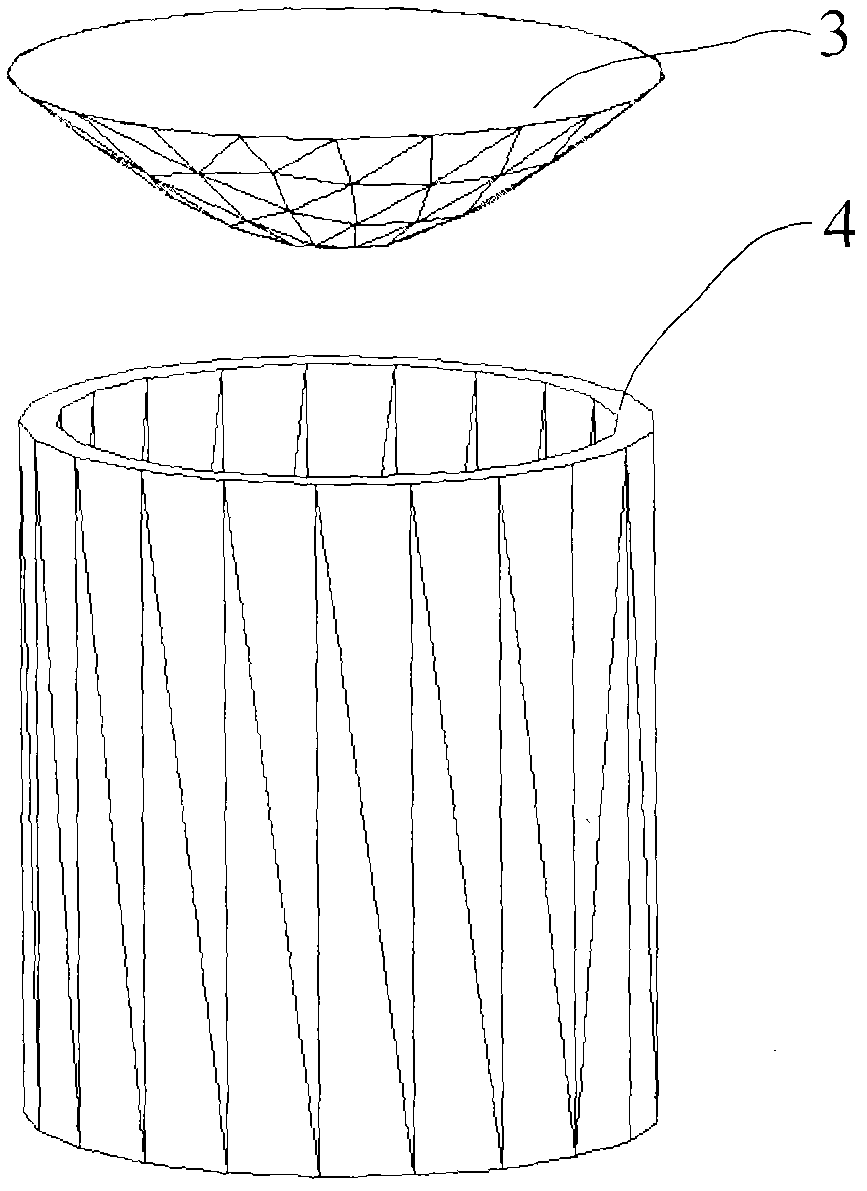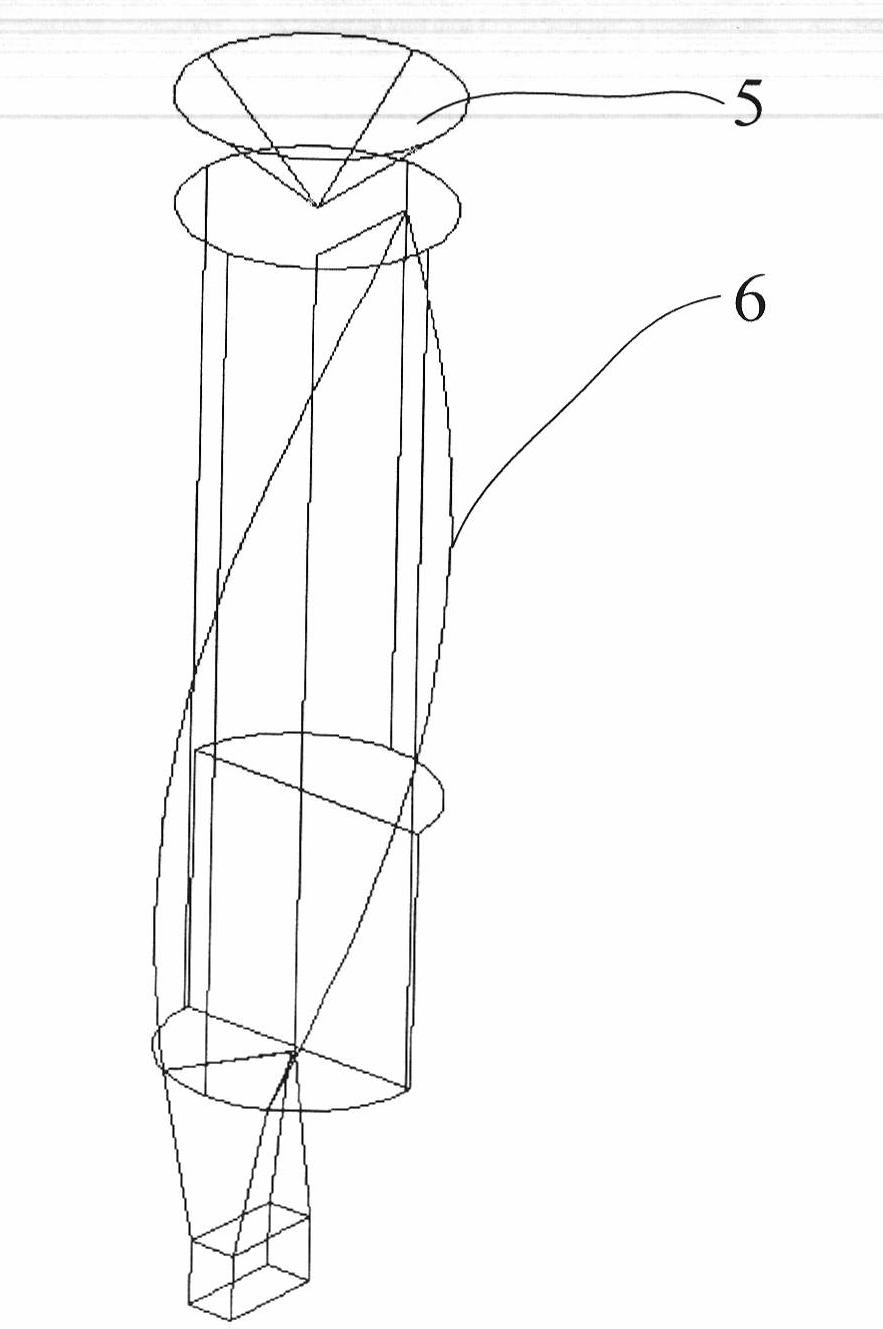Broadband E surface omni-directional antenna based on circular waveguide TE01 mode
An omnidirectional antenna and circular waveguide technology, applied in leaky waveguide antennas, antennas, electrical components, etc., can solve the problems of antenna radiation efficiency reduction, unsuitability, high processing technology and precision requirements, and achieve the effect of small loss and simple structure
- Summary
- Abstract
- Description
- Claims
- Application Information
AI Technical Summary
Problems solved by technology
Method used
Image
Examples
Embodiment 1
[0018] Such as figure 1 As shown, 1 is a tapered metal reflector, and 2 is a circular waveguide. The conical reflective surface can be supported by foam material, and for the convenience of understanding, the foam material for support is not shown in the figure.
[0019] The antenna characteristic that this embodiment requires to realize is: E face (namely figure 1 in the horizontal plane) omnidirectional radiation, H plane (ie figure 1 The elevation plane in ) the maximum radiation direction is in the horizontal direction. In order to achieve the required antenna characteristics, a conical reflector is used, and the operating frequency of the antenna is 26GHz-33GHz. figure 1 The structural parameters of the omnidirectional antenna are: the inner radius of the circular waveguide 2 is 7mm, the radius of the upper bottom of the cone 1 is 10mm, the height of the cone is 5mm, the distance between the top of the cone and the center of the circular waveguide opening is 4mm, and t...
Embodiment 2
[0021] Such as figure 2 As shown, 3 is the metal rotating surface with the convex direction facing the waveguide opening, and 4 is the circular waveguide. The metal rotating surface can be supported by foam material, and for the convenience of understanding, the foam material for support is not shown in the figure.
[0022] The main component of the mode transmitted in the circular waveguide 2 should be the TEO1 mode (the power of the TEO1 mode accounts for more than 80% of the total transmission power). The specific parameters of the omnidirectional antenna are that the inner diameter of the waveguide is still 7mm, and the radius of the bottom surface of the metal rotating surface 3 is still 10mm, the height is still 5mm, the distance between the apex of the metal rotating surface and the center of the waveguide opening is still 4mm, and the parameter equation of the generatrix of the rotating surface is: y=x 2 / 20, such as Figure 5 As shown, 7 in the figure represents th...
Embodiment 3
[0024] In the case that the microwave source outputs a non-circular waveguide TEO1 mode, a TEO1 mode converter can be used to convert the output mode of the microwave source into a circular waveguide TEO1 mode, and then use the antenna described in this patent, such as image 3 As shown, 5 in the figure is a mode converter from a rectangular waveguide to a circular waveguide TEO1 mode, and 6 is a metal tapered reflector.
[0025] On the premise that the circular waveguide transmits the TEO1 mode, adjusting the geometric parameters of the conical surface or rotating surface can achieve other technical indicators of the antenna (such as port impedance matching characteristics, H-plane beam characteristics, etc.) on the premise of obtaining omnidirectional radiation in the horizontal direction. Require. The main geometric parameters of the cone surface include: the height from the top to the waveguide, the diameter of the upper bottom surface, and the height of the cone; for the ...
PUM
 Login to View More
Login to View More Abstract
Description
Claims
Application Information
 Login to View More
Login to View More - R&D
- Intellectual Property
- Life Sciences
- Materials
- Tech Scout
- Unparalleled Data Quality
- Higher Quality Content
- 60% Fewer Hallucinations
Browse by: Latest US Patents, China's latest patents, Technical Efficacy Thesaurus, Application Domain, Technology Topic, Popular Technical Reports.
© 2025 PatSnap. All rights reserved.Legal|Privacy policy|Modern Slavery Act Transparency Statement|Sitemap|About US| Contact US: help@patsnap.com



